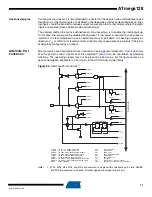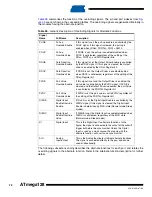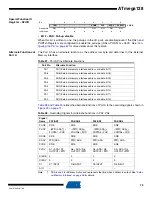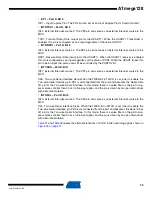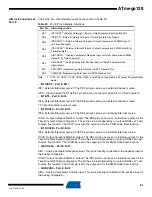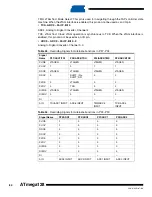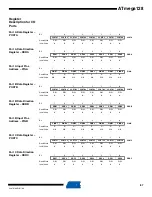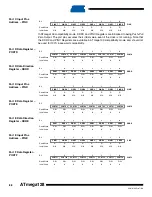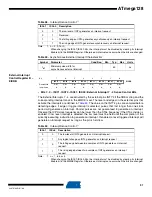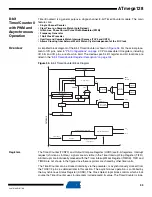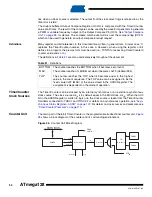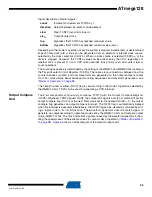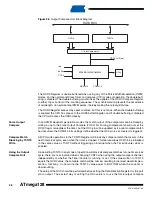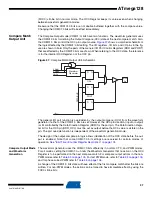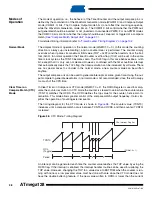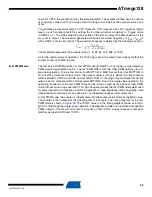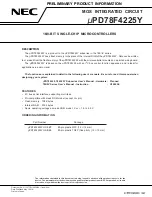
85
2467S–AVR–07/09
ATmega128
Alternate Functions of
Port G
In ATmega103 compatibility mode, only the alternate functions are the defaults for Port G, and
Port G cannot be used as General Digital Port Pins. The alternate pin configuration is as follows:
• TOSC1 – Port G, Bit 4
TOSC1, Timer Oscillator pin 1: When the AS0 bit in ASSR is set (one) to enable asynchronous
clocking of Timer/Counter0, pin PG4 is disconnected from the port, and becomes the input of the
inverting Oscillator amplifier. In this mode, a Crystal Oscillator is connected to this pin, and the
pin can not be used as an I/O pin.
• TOSC2 – Port G, Bit 3
TOSC2, Timer Oscillator pin 2: When the AS0 bit in ASSR is set (one) to enable asynchronous
clocking of Timer/Counter0, pin PG3 is disconnected from the port, and becomes the inverting
output of the Oscillator amplifier. In this mode, a Crystal Oscillator is connected to this pin, and
the pin can not be used as an I/O pin.
• ALE – Port G, Bit 2
ALE is the external data memory Address Latch Enable signal.
• RD – Port G, Bit 1
RD is the external data memory read control strobe.
• WR – Port G, Bit 0
WR is the external data memory write control strobe.
and
relates the alternate functions of Port G to the overriding signals shown in
.
Table 45.
Port G Pins Alternate Functions
Port Pin
Alternate Function
PG4
TOSC1 (RTC Oscillator Timer/Counter0)
PG3
TOSC2 (RTC Oscillator Timer/Counter0)
PG2
ALE (Address Latch Enable to external memory)
PG1
RD (Read strobe to external memory)
PG0
WR (Write strobe to external memory)
Table 46.
Overriding Signals for Alternate Functions in PG4..PG1
Signal Name
PG4/TOSC1
PG3/TOSC2
PG2/ALE
PG1/RD
PUOE
AS0
AS0
SRE
SRE
PUOV
0
0
0
0
DDOE
AS0
AS0
SRE
SRE
DDOV
0
0
1
1
PVOE
0
0
SRE
SRE
PVOV
0
0
ALE
RD
DIEOE
AS0
AS0
0
0
DIEOV
0
0
0
0
DI
–
–
–
–
AIO
T/C0 OSC INPUT
T/C0 OSC OUTPUT
–
–

